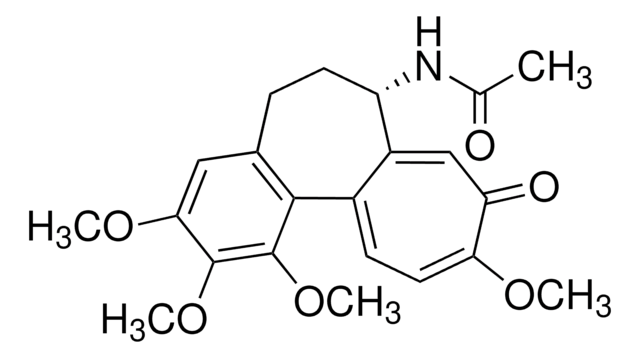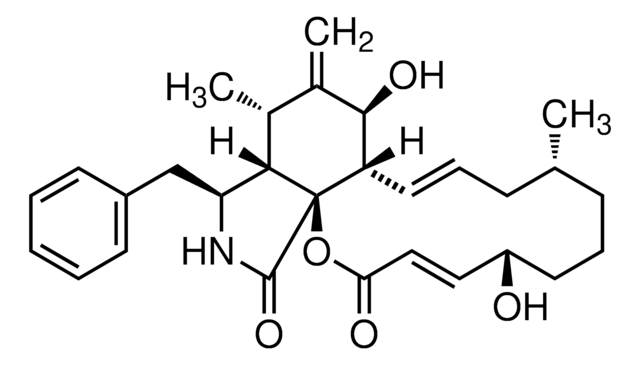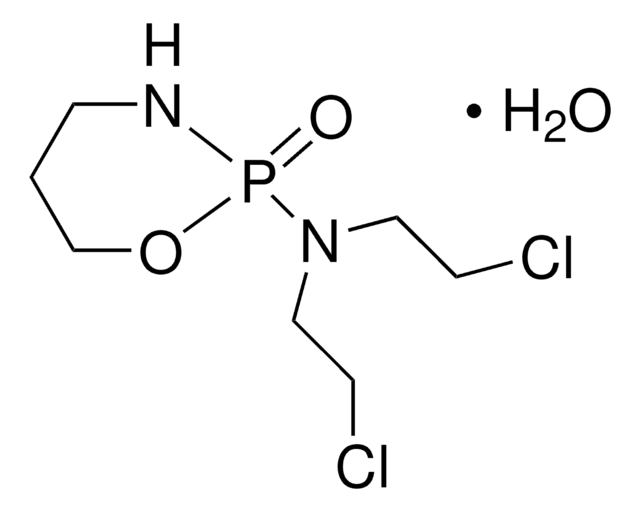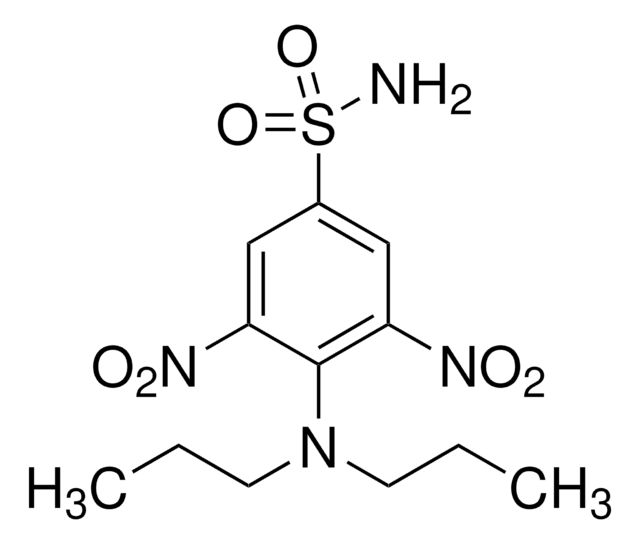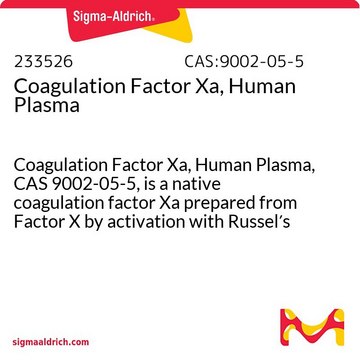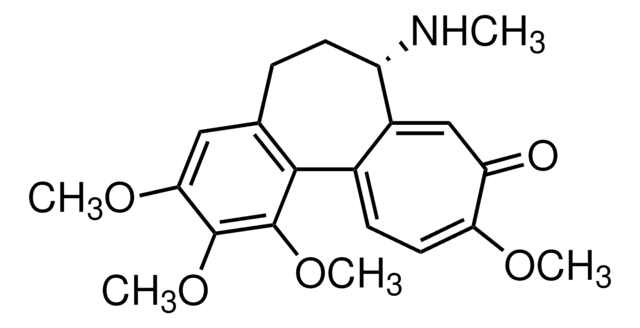234115
Colchicine, Colchicum autumnale
Colchicine, Colchicum autumnale, CAS 64-86-8, is an inhibitor of mitosis that disrupts microtubules and inhibits tubulin polymerization. Induces apoptosis in PC12 and cerebellar granule cells.
Synonim(y):
Colchicine, Colchicum autumnale
About This Item
Polecane produkty
Poziom jakości
opis
Merck USA index - 14, 2471
Próba
≥94% (HPLC)
Formularz
powder
producent / nazwa handlowa
Calbiochem®
warunki przechowywania
OK to freeze
protect from light
kolor
yellow to off-white
rozpuszczalność
ethanol: 10 mg/mL
water: soluble
Warunki transportu
ambient
temp. przechowywania
10-30°C
ciąg SMILES
N([C@H]1CCc2c(c(c(c(c2)OC)OC)OC)c3c1c[c](c(cc3)OC)=O)C(=O)C
InChI
1S/C22H25NO6/c1-12(24)23-16-8-6-13-10-19(27-3)21(28-4)22(29-5)20(13)14-7-9-18(26-2)17(25)11-15(14)16/h7,9-11,16H,6,8H2,1-5H3,(H,23,24)/t16-/m0/s1
Klucz InChI
IAKHMKGGTNLKSZ-INIZCTEOSA-N
Opis ogólny
Działania biochem./fizjol.
Inhibitor of mitosis
Ostrzeżenie
Inne uwagi
Lindenboim, L., et al. 1995. J. Neurochem.64, 1054.
Leung, M.F., and Sartorelli, A.C. 1992. Leuk. Res.16, 929.
Santell, L. 1992. Exp. Cell Res. 201, 358.
Salmon, E.D., et al. 1984. J. Cell Biol.99, 1066.
Informacje prawne
Hasło ostrzegawcze
Danger
Zwroty wskazujące rodzaj zagrożenia
Zwroty wskazujące środki ostrożności
Klasyfikacja zagrożeń
Acute Tox. 2 Oral - Muta. 1B
Kod klasy składowania
6.1A - Combustible acute toxic Cat. 1 and 2 / very toxic hazardous materials
Klasa zagrożenia wodnego (WGK)
WGK 3
Temperatura zapłonu (°F)
Not applicable
Temperatura zapłonu (°C)
Not applicable
Wykazy regulacyjne
Wykazy regulacyjne dotyczą głównie produktów chemicznych. Można w nich podawać ograniczoną liczbę informacji na temat produktów niechemicznych. Brak wpisu oznacza, że żaden ze składników nie znajduje się w wykazie. Użytkownik odpowiada za zagwarantowanie bezpiecznego i zgodnego z prawem stosowania produktu.
EU REACH Annex XVII (Restriction List)
Certyfikaty analizy (CoA)
Poszukaj Certyfikaty analizy (CoA), wpisując numer partii/serii produktów. Numery serii i partii można znaleźć na etykiecie produktu po słowach „seria” lub „partia”.
Masz już ten produkt?
Dokumenty związane z niedawno zakupionymi produktami zostały zamieszczone w Bibliotece dokumentów.
Klienci oglądali również te produkty
Nasz zespół naukowców ma doświadczenie we wszystkich obszarach badań, w tym w naukach przyrodniczych, materiałoznawstwie, syntezie chemicznej, chromatografii, analityce i wielu innych dziedzinach.
Skontaktuj się z zespołem ds. pomocy technicznej